What: „Grand Prize of Berlin“ Where: Racecourse Hoppegarten, Berlin Last…
Gerhard Gössl – the master of garps
Who: Gerhard Gössl, Entrepreneur
Where: Salzburg, Austria
Best of MyStylery
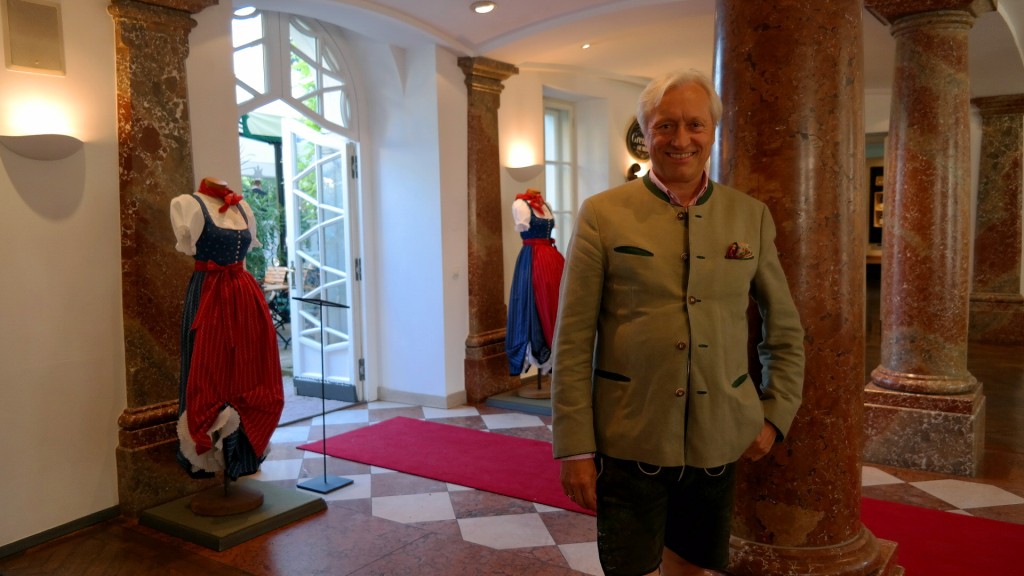
Gerhard Gössl in the entrance of his Gwandhaus in Salzburg. Gössl is the world’s largest garb manufacturer in the premium segment
The man wears garb. Principally. This is not really surprising as he’s well placed: Gerhard Gössl is the world’s biggest noble garb manufacturer and therefore an expert for dirndl, cardigans and lederhosen. Since the 80s Gössl leads his company, which was founded 1947 by his parents in Salzburg, with discipline and consequence. Mother Grete – a laundry maker from Thuringia – and father Leopold focused on production of blouses.
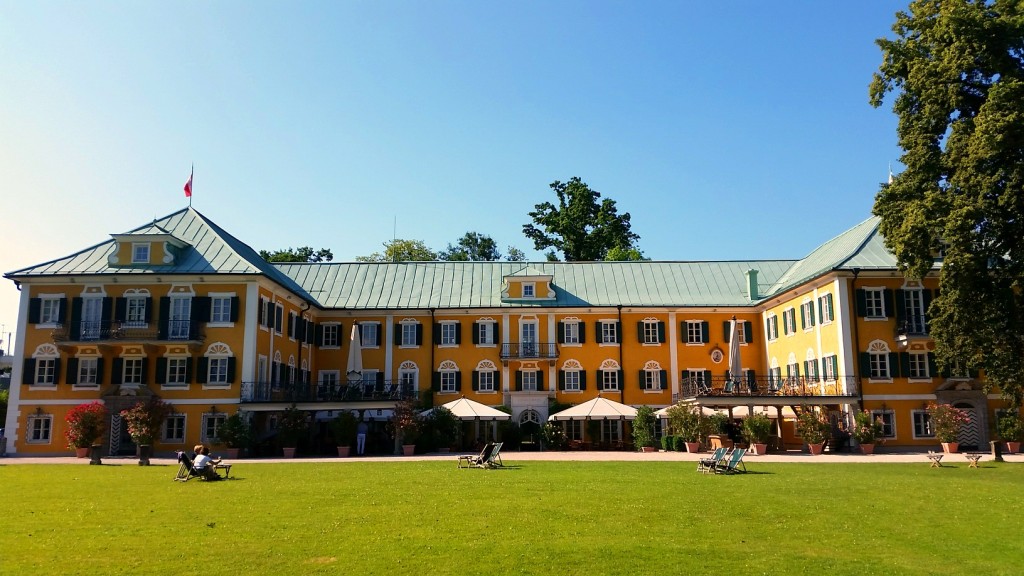
Once manor of the archbishops, later hotel, since 2005 Gössl’s comanpy-central: the Gwandhaus in Salzburg
Nowadays the traditional company clothes with 40 stores and over 100 outlets in Germany, Austria and South Tirol from head to toe. Thereby Gössl attaches special importance in quality: lots of pieces are handmade, with lots of love for detail. “Into every dirndl, whose bodices are processed with baleen, we sew a luck-penny”, explains the manufacturer.

Visitors of the festival ‘Salzburger Festspiele’ love to wear garps and Gössl dresses the whole family. Classically, of course.
A Gössl-dirndl suits – perfect. What are you looking at first, if you meet a dirndl-wearer? “At the whole presence and how the woman moves in the dirndl”, says Gössl and laughs. Yes, he’s conservative and tradition is from importance. Not just some fast-paced trend.
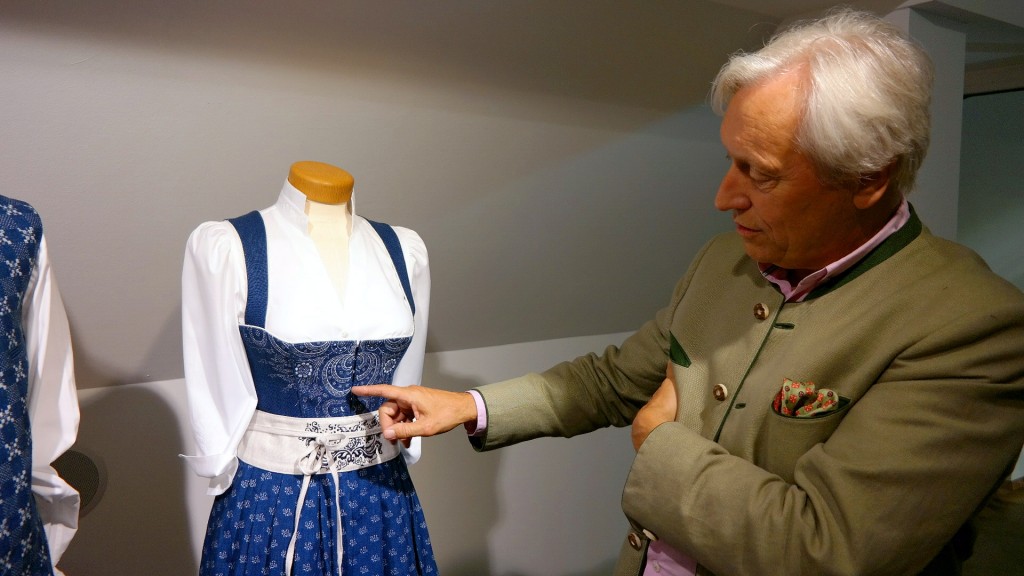
“The fabric of a so-called blue-print dirndl is created by a special printing process: first, the bright linen or cotton fabric is printed with a protective ground, then dyed blue with indigo.”
“The special feature of our brand is the differentiation and the genuineness, which is also much appreciated by our young clients”, says the studied economist. As keeper of the original he’s against trash and so-called fantasy-dirndl: “They’re only medial big. A temporarily appearance”, states Gössl. “The classical garb therefore survived because it creates identity.”
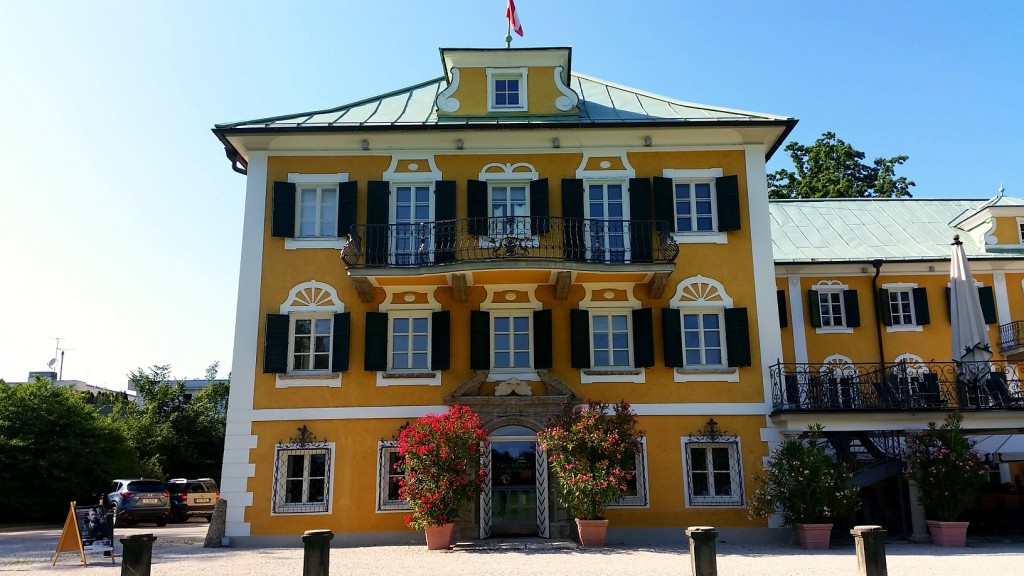
The historical part of the Gwandhaus, a baroqueized renaissance-construction
Cultivating this identity of architecture, language and garb is Gössl from huge importance. In 2000 he purchases the former castle hotel St. Rupert in Salzburg, renovated and expanded the baroqueized renaissance-construction, which since then is called ‘Gwandhaus’. Austrian – without the ‘e’. “The word Gwand is the original word for garb.”
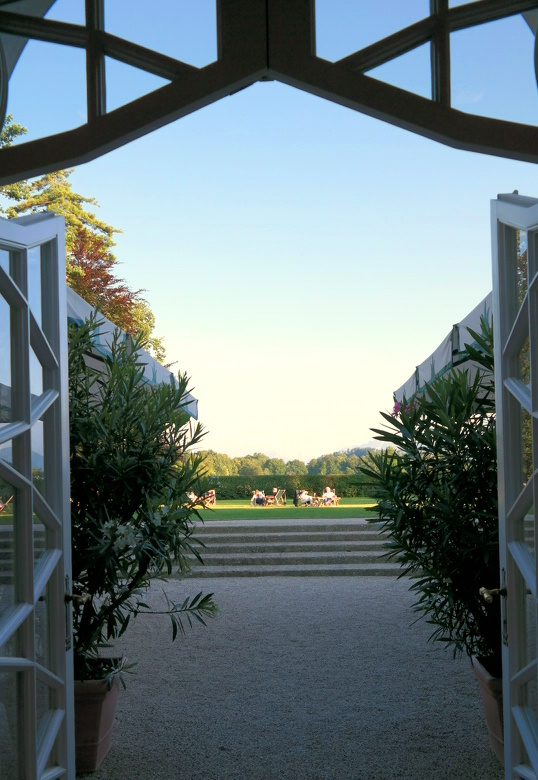
The Gwandhaus offers beside its magnificent views culinary, culture, the biggest handmade archive, historical costumes and a garp shop
Since the middle age the hall-type exhibition- or warehouses of this cloth industry are called Gewandhaus or Tuchhalle. There, the dressmakers sold cloth. Today, the beautiful estate serves as headquarter of the company, tailor shop, restaurant, but also a room for events and cultural meetings: a place for all senses.
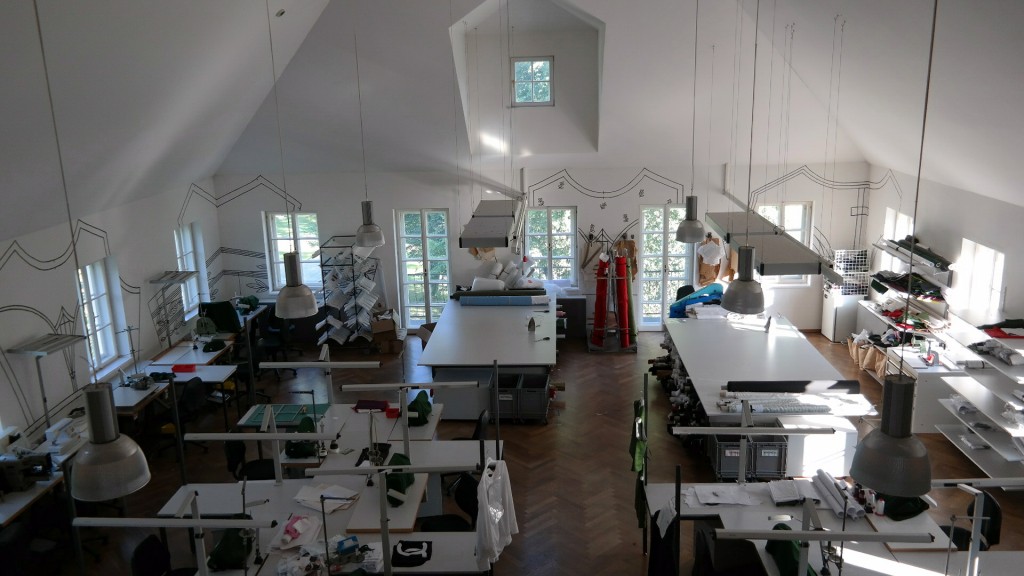
The studio: Here the visitors can watch as the dirndl are tailored
There Gössl occupies 60 employees, five designers create 20 different dirndl per season. Furthermore the atelier is a kind of stage and the ‘Gwandhaus’-visitor can see how the dirndl are being needled and they can deepen into the history of handcraft in the worldwide biggest handwork archive. Some time ago Karl Lagerfeld came by and had an intensive look around. Apparently he was impressed: the actual Chanel-collection is one garb look, an adaption and at most homage to the original. “Everyone should wear what he likes”, means Gerhard Gössl. “Our classics are not for a season, they do also stand for the whole live.” BvH
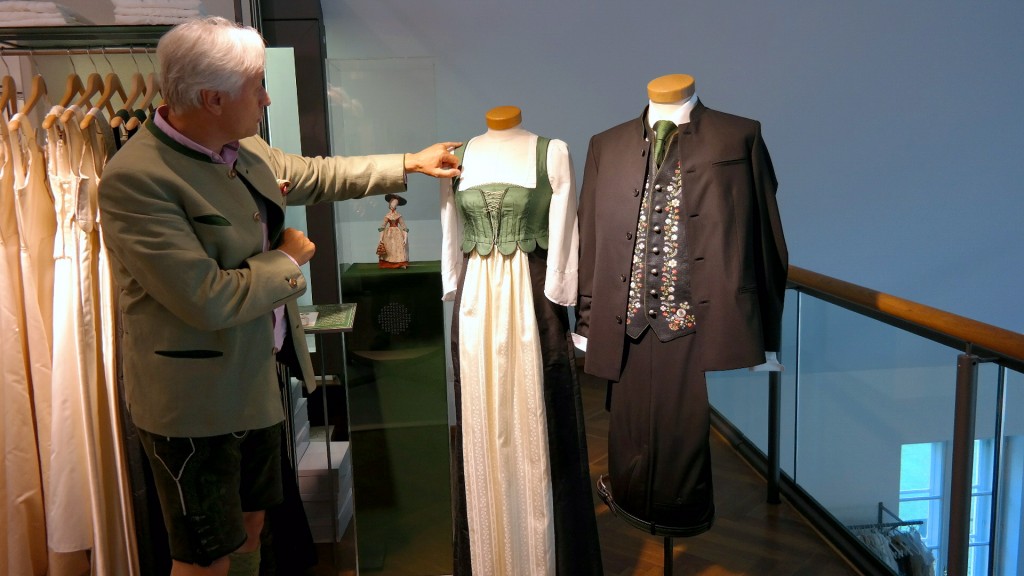
When Archduke Johann of Austria married the Postmaster-daughter Anna Plochl in 1829, it was a marriage against all courtly resistors. “The Anna Plochl wedding dirndl is manufactured today by the original presentation and enjoys still great popularity,” said Gerhard Gössl about the embossed timeless elegance wedding dirndl.
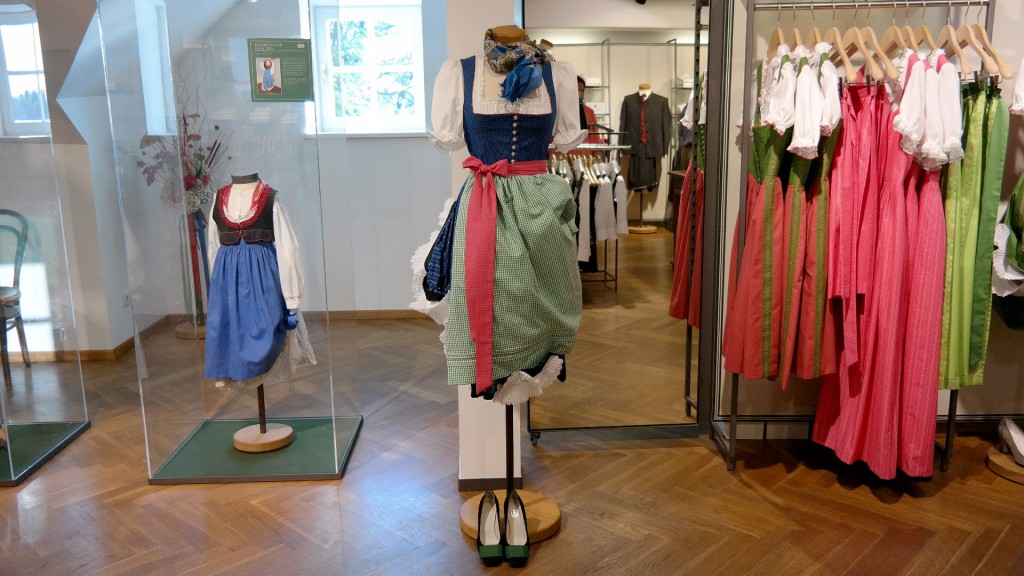
“You can automatically see whether a woman feels comfortable in her dirndl or not. Being able to wear it will be a benefit.”
Gössl’s ultimate styling tips:
1. Never wear nylon stockings with a dirndl
2. Dirndl and high heels counted as “no go”. Today it’s okay.
3. What counts as chic in Bavaria is in Austria scorned: the underskirt belongs under the dress and should not be visible.
4. A dirndl has to fit perfectly. Too tight dirndls apply as unmistakably message.
5. Be careful with the loop of the apron: the loop tied on the right side means ‘in a relationship’ or ‘married’. Left means ‘single’, centrically stands for ‘virgin’. Only widows – or waitresses – wear their loops on the back. Not only during the ‘Salzburger Festspiele’.
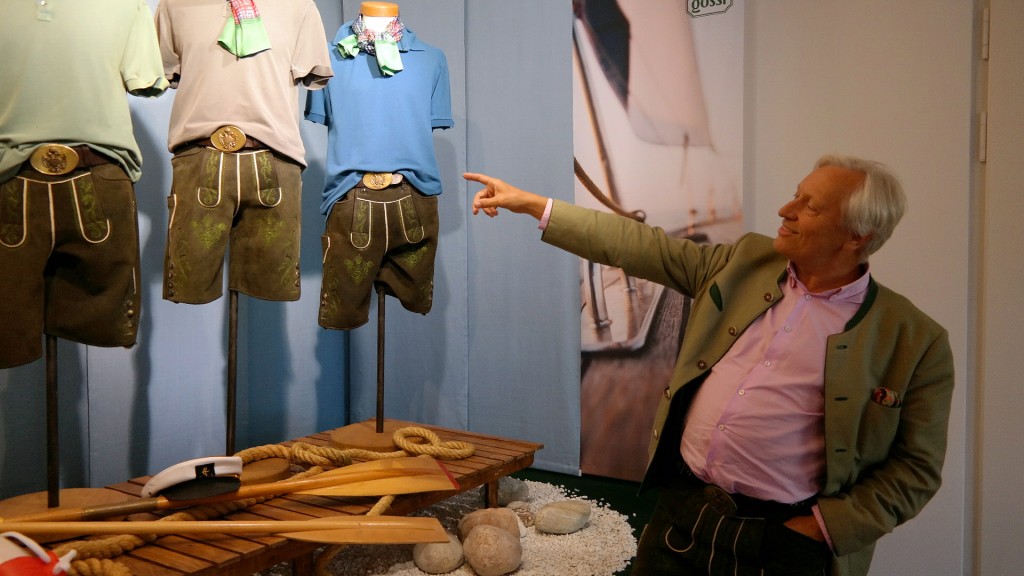
Gerhard Gössl explains the difference between a sevenfold seam lederhose and a Styrian, which has no seams but stitching of classical motifs such as deer or chamois
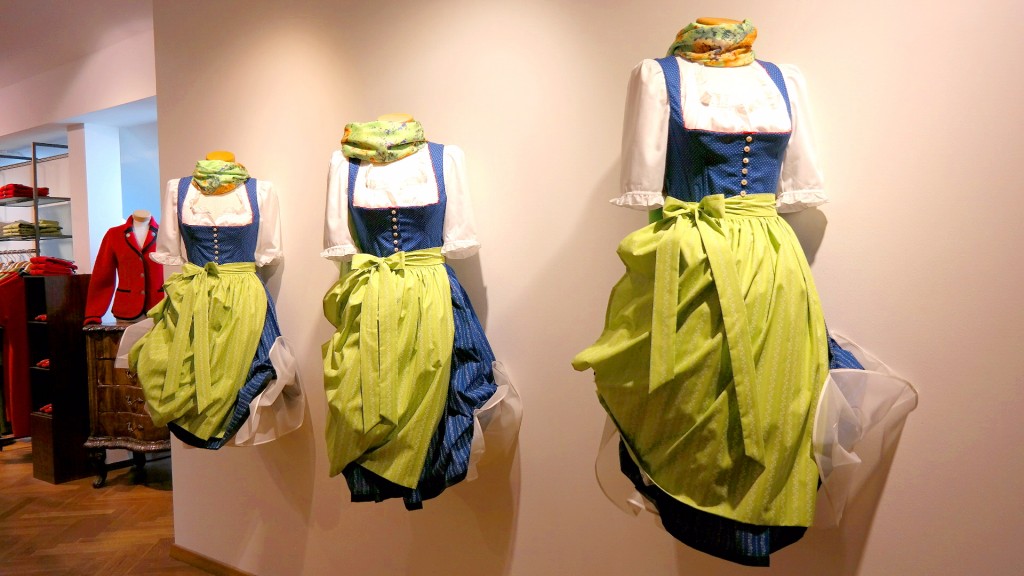
“The imperial house and the aristocracy oriented themselves during their stays in Ischl at the clothing of the rural population. This is why the Austrian garb compared to the Bavarian is much more discreet.”
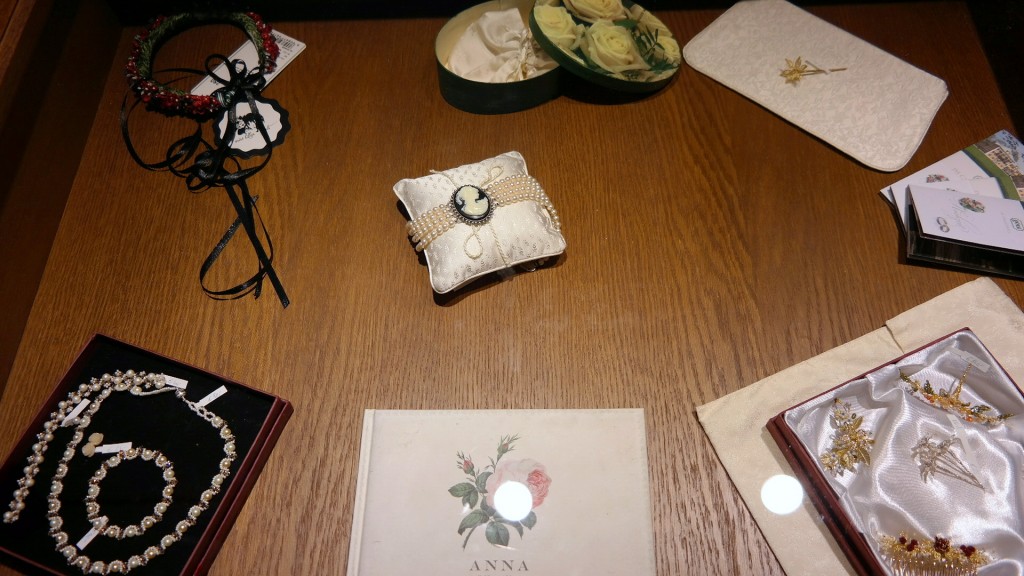
Of course Gössl also offers decorative accessories for the perfect look

The antique fireplace from the 19th century shows the coat of arms of the crown countries of Austria’s imperial and royal monarchy
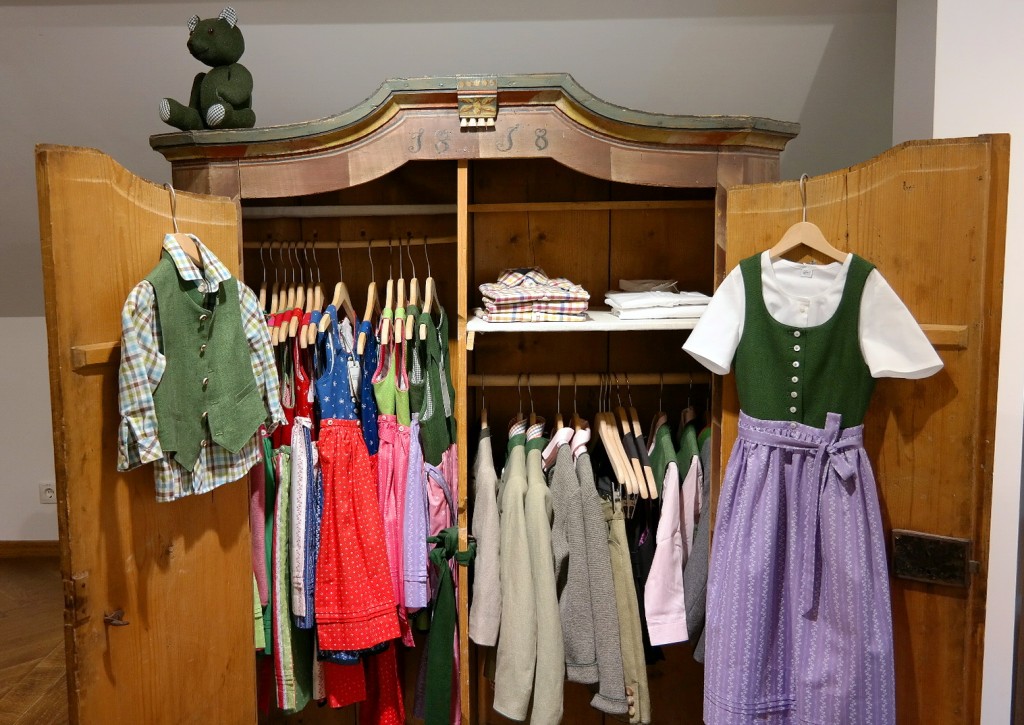
Gössl is the biggest noble garb manufacturer and therefore an expert for dirndl, cardigans and lederhosen
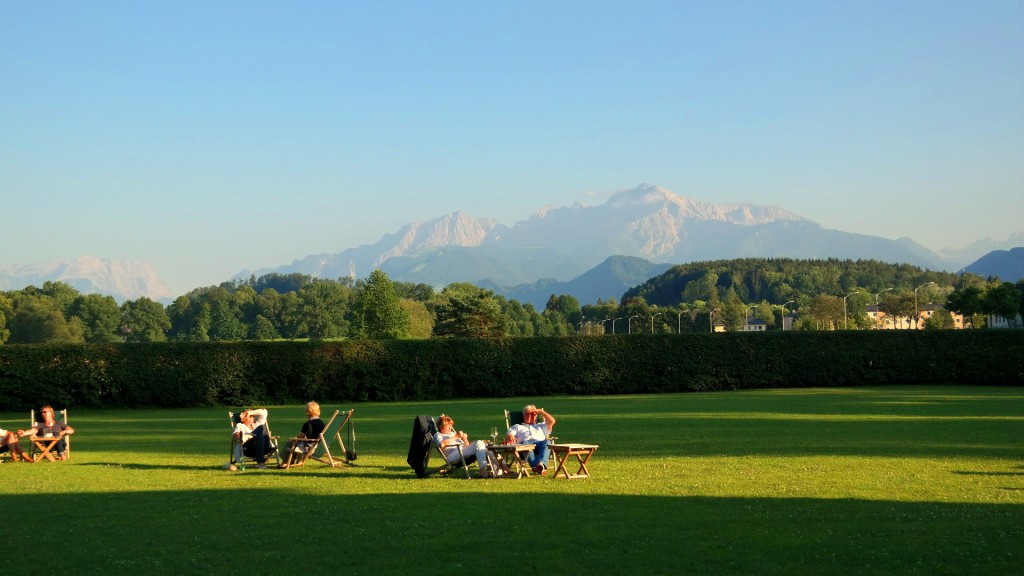
Wonderful view: from the Gwandhaus one glances on the Berchtesgadener mountains with Watzmann (2,713 metres) and Hohe Göll (2,522 metres)
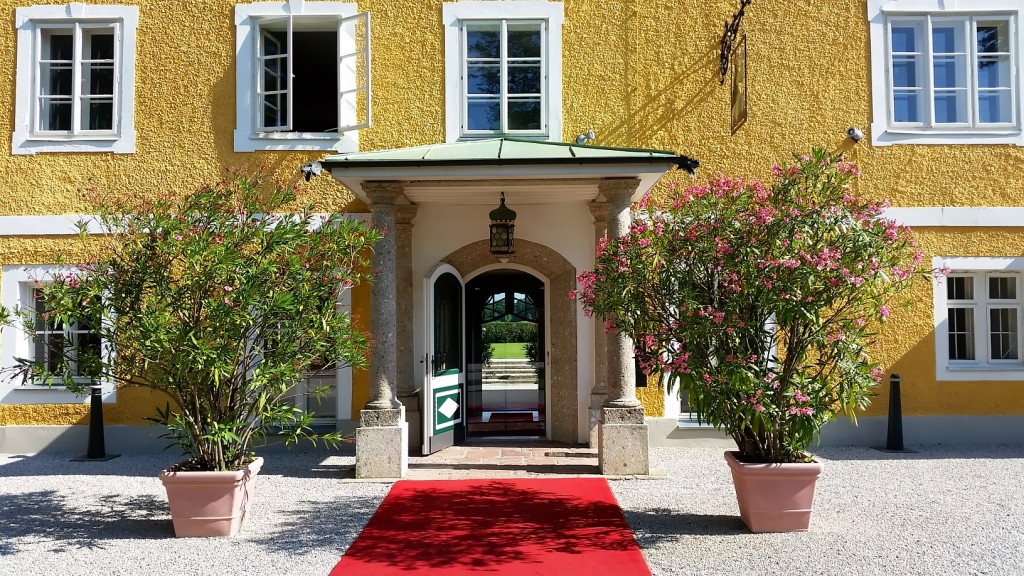
Best address for garps and dirndl – not only for the visitors of ‘Salzburger Festspiele’: The Gwandhaus
Contact Gerhard Gössl:
Gwandhaus
Morzger Straße 31
5020 Salzburg, Österreich
www.gwandhaus.com
www.goessl.com



